Projects: Les Paul - Experiencing the Innovative Process
Overview
The goal of this ongoing project is to teach students about Les Paul’s life of innovation and musicianship through hands-on project-based learning activities in which students analyze, recreate, adapt, and, ultimately, use musical inventions originally created by Les Paul. Since 2020, the PI and music faculty affiliated with the Electric Guitar Innovation Lab (EGIL) at WPI have been developing hands-on instructional activities centered around Les Paul's innovative spirit and implementing those activities in WPI music technology courses. Undergraduate students from various majors enrolled in these courses work in small groups and self-select one of Les Paul's innovations to study including the Rail, the Log, and the Les Paulverizer. Music tech prototypes and instruments developed each year through this research by undergraduate students are then used by middleschool students who participate in our Les Paul Music Tech Summer Camp. This research is supported through a generous grant from the Les Paul Foundation .
Project Background
Les Paul lived a life of innovation fueled by his curiosity, his interests in experimentation, and his willingness to encounter setbacks, and this project seeks to encourage students toward the pursuit of innovation germane to their own interests. As described herein, some of these projects were literal recreations of Les' inventions using comparable materials while others are new adaptations of these inventions inspired by the analysis of Les' work.
With consideration of Les Paul's many inventions, the PI's developed several open-ended projects related to electronics, engineering, musicianship, composition, and performance in order for students to embrace innovation in these respective areas through the recreation and adaptation of experiments and innovations explored by Les Paul. Through these hands-on projects, students learned about the very unique and innovative musician Les Paul, his history, his work, and his legacy. Each student team worked during 7-week terms toward preparing deliverables unique to their respective projects including resources that future teams could leverage for future work.
The Rail
The primary goal of the Rail project is for students to learn about the history and significant of Les Paul's "rail" experiment and the influence it had on later work by Les and others. Students worked with faculty to recreate and adapt this technology toward gaining an understanding of the roles of various materials in defining an instrument's timbre through experimention. The directive given to students in the first iteration of this project (2020) was as follows:
Make a literal recreation of the original Rail that Les Paul designed.
Objectives:
-Explore the original Rail; from what material was the original rail made? How did it work? How did the electronics work? There are many books in the WPI campus library on this topic.
-Devise a plan and a timeline for the creation of specific aspects of the project; this project may seem easy, but it really isn't! Regardless, set stretch goals for yourselves: if you think you can get the rail in good shape by the end of the term, consider some features that did it exist in the original or a comparative study of multiple rails made from different materials of the same mass!
-Discuss materials with your Professor; you should absolutely try to find a piece of rail from a junkyard someplace (or at least the same material), and there are also some ready-made transducers available in our lab that can streamline your development process.
Deliverable:
By the end of this term, you should have a fully-playable, self-contained, ready-to-go rail instrument that can be performed by others through an amplifier.
Project: the Rail Recreation
This team sought to recreate Les Paul's rail using materials comparable to what Les originally used as well as some alternate materials. The team fabricated rails of two different metals and used spectral analysis tests to compare the frequency content of each instrument.
Using the resources at hand
Of note: the COVID-19 pandemic occurred during academic year 2020 when we first began these projects. The ensuing self-quarantine forced all project work to be carried by students in their respective homes and without access to many campus resources, workshops, and tools. These constraints, however, forced the students to conduct these experiment with limited tools and resources in the same way that Les's original experiments like, for example, the rail experiments in which he used a 2-foot piece of discarded rail he found across the street from his home and the microphone from his mother’s telephone. Read more about the students' work in this report .
Rail Adaptations
The anticipated result of exploration of the Rail was the creation of several new new instruments made from found materials. Students were encouraged to explore unconventional materials that are not traditionally used in instrument-making. By virtue of this study, students learned concepts from material science as they relate to instrument timbre as well as the potential for the use of sustainable and recycled materials in instrument making. The broad significant findings were related to the understanding of how specific materials can be used in conjunction with magnetic pickups, piezo-electric elements, and other transducers to produce new timbres; this notion was central to Les' Rail experiments.
Using Les Paul's work with the Rail and the notion of "found materials" as inspiration, students then pursued developing following adapted instrument projects:
Project: Record-breaking Guitar
In the same way that Les Paul's rail leveraged unconventional "found" materials toward the construction of a musical instrument, this student team sought to repurpose vinyl records toward the construction of a guitar body.
One of the learning outcomes that can result from these types of experimental explorations is a set of reflective statements about "what worked", "what didn't work", as well as an understanding of "what could be done differently" in the future. In this video , these students discuss these very things, which will allow future student groups to build upon their efforts; "...by doing this, we found the main problems that can easily be avoided [for] next time". As the students learned, part of what made Les Paul a successful innovator was his resilience and continued experimentation; the rail, just like this vinyl-body guitar, isn't, in itself, a very sophisticated musical instrument achievement, but it is and was a stepping stone toward great ideas that followed.
The Rail Kit
The story of "the rail" showcases the essence of Les’ “let’s try this out” mentality. In 2021, we introduced a new Les Paul Music Tech Summer Camp for middle-school students, and we wanted to create an activity where students in our camp could learn about Les’ experiences with the Rail and, also, use that illustration as the starting point for some other learning activities. What we devised is “the Rail Kit”: a 3D-printable rail-type instrument that students print, assemble, and tune themselves.
We drew inspiration from Les’ mother who pointed out some of the impracticalities of performing with the original Rail design, and added two strings with adjustable locking tuners to the design. During the summer camp, students can learn about and experiment with tuning the strings on the Rail. The Rail students print is used for additional hands-on lessons in the camp whereby students wind their own pickup, plug their rail into a custom “Les Paul Camp” effects pedal (described further in the "Lover Pedal" project section), and perform their rail through a small amplifier. Students also learn about 3D-printing, how the materials used impact the sound of the rail, and how that approach compares to traditional machining.
We’ve made the entire Rail Kit project (models, parts lists, separate instructions for teachers and students, etc.) open and accessible to all through our public GitHub repository for anyone who wishes to make their own Rail Kits. If you do not have access to a 3D-Printer, we have partnered with some local shops that can fulfill orders to print and assemble kits as needed using the resources above. Email us for more information.
The Log
The primary goal of the Log project is for students to learn about the history and significant of "the Log" and learn about the ways Les Paul leveraged his findings from the Rail and other experiments into what became known as "the Log". Students explored a literal recreation of the Log with special attention drawn to the novelty of the faux "wing" sides and the perceptions and expectations of "conventional" guitarist at the time. Students leveraged their findings from the Rail experiments and integrated the best aspects of those findings into newly created instruments. Students worked with faculty to explore various aspects of using magnetic pickups, piezoelectric transducers, and microphones in instruments made from a variety of materials including wood, composite and 3D-printed materials, and sustainable and recycled materials. The directive given to students in the first iteration of this project (2020) was as follows:
Make a literal recreation of the original Log that Les Paul designed, complete with removable "wings" (sides).
Objectives:
-Explore the original Log; from what materials was the original Log made? What about the "wings"? How did it all come together? There are many books in the WPI campus library on this topic.
-Devise a plan and a timeline for the creation of specific aspects of the project; the “wings” portion of this project alone will require some real effort to nail, so outline your scope for this term accordingly!
-Discuss materials with your Professor; there are many ready-made components available in our lab that can streamline your development process (necks, tuning pegs, pickups, etc.)
Deliverable:
By the end of this term, you should have have a fully-playable, self-contained, ready-to-go Log instrument that can be performed by others through an amplifier.
Project: the Log Recreation
This team sought to recreate the Log using comparable materials. The images and video below describe the processes completed by these students.
Les Paul regularly demonstrated a sense of fearlessness with regard to his innovative efforts; of similar mindset, the two students who asked to work on this project were not guitarists, and, yet, responding to the same type of inquisitive fearlessness that Les demonstrated, these students learned what they needed to, as they needed to through this hands-on project. Read more about the students' work in this report .
We ultimately refined our Log prototype by addressing the neck joint. As shown in these photos, students explored various neck joint approaches used in instrument making and our Log was modified accordingly. These modifications allowed us to set up the Log properly for performance.
In 2024, our lab refined and delivered our Log recreation to the Waukesha County Historical Society & Museum in Waukesha, Wisconsin, Les Paul's hometown. There at the museum, it's used as an educational tool to demonstrate the concept of the Log to students.
Log Adaptations
The anticipated result of the exploration of the Log was the creation of several new musical instruments. Just as with the rail, students were encouraged to explore other materials that are not traditionally used in instrument-making as well as instrument size, ergonomics, and general refinements to all aspects of instrument-making. Les addressed these areas in a variety of his projects including his aluminum guitar and his mini guitars .
Using Les Paul's work with the Log as inspiration, students then pursued the following adapted instrument projects:
Project: the Hinge Guitar
Inspired by the removable sides attached to the Log (on hinges) and the "repurposed" materials aspects of the Rail, this student team created a guitar from pieces of an old door and, toward making an ergonomic arm-rest, attached a hinged arm to one of the sides.
The Les Paulverizer
The primary goal of the Les Paulverizer project is for students to learn about the history and stage implementation of the "Les Paulverizer" . Students then worked to recreate and adapt this technology toward new music performance experiences. The anticipated result of this exploration was the adaptation of guitars and other musical instruments so that they would be capable of playing back pre-recorded audio files by using accessible controls affixed to or embedded within the instruments themselves. Students then compose and perform new pieces using this technology. The directive given to students in the first iteration of this project (2020) was as follows:
Make an adaptation of the Les Paulverizer using modern technology that 1) can be affixed to or embedded within a guitar and 2) sends MIDI information to a computer (via wired or wireless technology) in order to 3) play audio clips and 4) adjust levels and other parameters inside of a Digital Audio Workstation (DAW) 5) on Mac Windows computers 6) with an easy and hassle-free setup process.
Objectives:
-Explore the original Les Paulverizer; how did Les Paul use this device live? How did it really work originally?
-Devise a plan and a timeline for the creation of specific aspects of the project; you’ve got a lot going on in this project (computer connectivity, circuit boards, potentiometers, etc.), so plan your time wisely!
-Discuss materials with your Professor; consider both wired and wireless implementations as you explore microprocessors.
Deliverable:
By the end of this term, you should have have a fully-playable, self-contained, ready-to-go Les Paulverizer that can be attached to an instrument and used to playback audio from a computer.
The Les Paulverizer Adaptations
Unlike the literal recreations of Les' Rail and Log projects, students analyzing the Les Paulverizer initially explored modern-day adaptations. The purpose of this approach was to allow students to focus on developing a system that could 1) be easily adapted to other operating systems and expanded to include additional features (accessibility accommodations, novel operations, etc.) and 2) allow users to readily integrate the technology into their own music performance and composition ideas as Les ultimately did on stage with the Les Paulverizer.
Using the Les Paulverizer and Les Paul's on stage musicianship as inspiration, students pursued the following adaption projects:
Project: the Bluetooth Les Paulverizer
Inspired by the original Les Paulverizer, this team developed a Bluetooth device that transmits MIDI messages to control audio file playback in any DAW. Read more about the students' work in this report and in the videos below.
In 2024, our lab developed this interactive installation in Les’ hometown in collaboration with the Waukesha County Historical Society & Museum in Waukesha, Wisconsin. Our team then traveled to the museum in Waukesha and spent a few days setting up the installation, where the Les Paulveriser is now on display.
Also in 2024, our lab adapted our Les Paulverizer device into a DIY kit that could be assembled by students with a teacher's help. These kits are now available at a special site we've deveoped at LesPaulverizer.com . We partnered with Philadelphia-based company DIY:RE to fullfil orders and proceeds from the same of each kit support the Les Paul Foundation and our lab.
The Ding Dong
Les was involved with many different projects, so we began to explore approaches he took to facilitate prototyping on so many different inventions; in particular, we explored a testing rig that Les designed, which he lovingly called "the Ding Dong" !
For most people, developing a guitar pickup, for example, means having to remove-and-restring a guitar each time a change is made to the electronics. The Ding Dong, however, seemingly allowed Les to rapidly experiment with electronics he was developing while the strings remained in place. As you can see in this photo of Les standing next to the Ding Dong, the electronics in the center of the rig are easily accessible and removable.
We used Les’ Ding Dong design as the starting point toward building a testing rig that we could use in our lab. The result was a modular component testing rig that allows our student teams to develop a particular component of an electric guitar (pickup, bridge, etc.) independently, install that component into a 3D-printed or wood “module block”, and then integrate that block into the larger working system for testing and analysis. We call our rig "Apollo".
Like the Ding Dong, the advantage of this this type of rig is that we can isolate variables during testing, assessment, and development; a particular component can be tested independently alongside known working modules. As described further in the '59 Pickup' project section, a pickup (or any other component in development) can be built into a module and then attached to the system where the headstock, nut, strings, and bridge are already in place.
 Les' "Ding Dong" test rig on display at Discovery World
Les' "Ding Dong" test rig on display at Discovery World
As shown in this video, students have used this testing rig as part of our work with others in the field; notably, luthier Ken Parker Ken Parker. We are currently working with an adapted design for a “Playable Component Testing Rig” that will allow module blocks to be easily transferred from the current testing rig to one that more closely functions like a typical electric guitar.
The '59 Pickup
In 1959, Les Paul patented a novel concept for an electric guitar pickup by which the bridge of the guitar, the point where the strings come into contact with the body, acts as a magnetic transducer. However, due to materials available at this time, the “‘59 pickup” was mostly likely never fully-realized during Les’ lifetime. Bob Palmieri, founder of Duneland Labs audio devices and EGIL co-advisor for this project has further described the novelty of Les' design in the video below. Having spent some time with Les at his home in Mahwah discussing his accomplishments and approach to technical creativity, Bob's guidance on this project was extremely valuable to our team, and, additionally, the students got to hear some great "Les stories" along the way!
The concept described in Les’ patent is unusual, and, from what we can tell, unexplored. We found some photo evidence suggesting that a prototype might exist in this image that seems to show a "normal" single-coil pickup placed behind the bridge, which, though quite interesting, is not what Les described in his patent where the pickup is the bridge. There are other factors that suggest that Les' vision for this pickup was never fully-realized; specifically, the magnetic function Les envisioned and described would be difficult to achieve without modern neodymium magnets, which weren’t invented until the mid-1980s. Regardless of whether or not a prototype of this pickup exists, Les was clearly on to something and his approach had the potential to produce timbres that aren’t readily available to musicians. To this end, we assembled several teams of students to, perhaps for the first time, realize Les’ vision for this pickup by creating it as closely as possible to Les’ original design with the use of modern components and materials.
Our student team began this pursuit by, first, learning about pickup winding approaches, past and present. The result of this term-long exploration was the creation of a series of videos that could serve as a primer on pickup-winding for others along with many new pickups students learned to make themselves.
The following term, another team of students leveraged these resources to produce a series of working prototypes that facilitated the unique concept described in Les' patent. Many different approaches and factors were explored as noted in this report .
Below are two audio examples of this pickup recorded in our lab and performed from our Ding Dong-inspired testing rig:
Both audio examples have no filtering applied and showcase quite a bit of audible noise. However, the audio examples also demonstrate that the concept works and that there is potential for this pickup to be refined further through continued research and development. Unsurprisingly: Les was on to something! We are actively efine these pickup prototypes and the mechanisms by which the magnets are able to move in sympathy with the strings. Over the summer 2021, another team of students built upon the work of previous groups and, among other things, explored and implemented alternate bearings to reduce friction while the magnets move. As demonstrated in the videos below, these improvements allowed us to move our prototypes from the test rig to an actual guitar.
Effects Pedals & Processors
Les Paul developed a variety of guitar effects and experimented with many approaches to altering sounds with electronics; many of the effect pedals and processors used today are rooted in Les’ work in this area.
Drawing inspiration from Les’ Ding Dong testing rig, we sought to develop “Effects Testing/Development Rigs” that students could use to rapidly experiment with and prototype digital and analog effects pedals and processors. The overarching goal with both effects rigs was to allow students to focus their attention on the components that produce the actual effects so that they could rapidly prototype new sounds without getting bogged down with questions related to technical infrastructure like "what kind of power supply do we need?", "what's a good microcontroller?", "what potentiometers should we use?", and so on.
To begin, students working in teams performed a technology review of common pedal circuits by type (compression, boost, distortion/overdrive, fuzz, chorus, flanger, tremolo, delay, reverb, phasor, filter/envelope/EQ), specifically noting common patterns in schematics, and the elemental building blocks that are common to each pedal type. They created System Block Diagrams for different pedals and analyzed the similarities and differences between different circuits' approaches; this allowed us to discuss the essence of individual effects in terms of specific circuits or algorithms.
The Digital FX Pedal Kit
The Digital FX Pedal Kit we designed allows effects to be written in code (Max/Gen ) and then pushed to a microcontroller. We developed a comprehensive “FX Testing Rig” software tool to streamline the code-writing process, so that students could focus their efforts entirely on “the audio effect”; while prototyping, students can play an instrument (or play pre-recorded audio recordings of a guitar) into the “effect code block” that they’re writing to hear what their effect will sound like when it’s ultimately loaded onto the microcontroller of a pedal. We explored many different microcontrollers and ultimately chose to build our platform around the Daisy Seed .
Students then work through a step-by-step guide to assemble the pedal components, and once the effect code is written and working as desired in our software, students can connect the pedal to their computer, press a button, and their effect code is loaded as firmware onto the pedal's microcontroller and will run the effect “standalone” without needing to be connected to a computer.
Project: The "Lover" Effect Pedal
We put then put our Digital FX Pedal Kit to the test: we asked students to explore Les Paul’s arrangement of Rogers and Hart's "Lover”, which prominently features some of Paul's innovative production techniques including multitrack overdubbing and manipulation of playback rate to achieve otherworldly timbres from his electric guitar. Using the pedal resources we developed as scaffolding, we asked a team of students to learn about and, ultimately, implement the effects of “Lover” into a single guitar effect pedal with the primary feature of the pedal being real-time pitch-shifting in order to achieve the famous “double-speed” sound Les achieved in his studio recording.
The student presentation video below shows the final result, which we call “the Lover Pedal”. As an added bonus, the team explored and implemented a few other effects Les pioneered including flanger and delay/echo. We then used that code to make a "Multi-FX Pedal" to be used as part of an instructional activity in our Les Paul Music Tech Summer Camp; every camper learns to perform with this pedal and use these effects while playing their 3D-printed Rail instrument!
We actively develop and iterate on our FX Pedal Kit and have prepared guides and other resources so that others can experiment with effects and electronics
The FX Hackathon
Having previously developed this pedal-making platform, and having used the kit with students to create the "Lover" pedal, we scaled these efforts to pilot our first-ever FX Hackathon event in spring, 2022. WPI students worked in small teams with coaches (musicians, faculty, and professionals from pedal/effects communities) to create their own audio effects devices! Student teams learned about Les Paul's sense of exploration and pioneering work in electronics and rapidly developed unique effects into performable pedal devices in this unique single-day event, which is now held annually!
This event begins with an opening discussion about Les Paul and the Rail in order to inspire students and attendees with this story of fearless experimentation. The story of the Rail encompasses many things that students address while hacking at this event: considering a unique timbre, devising a plan for making a performable something, being resilient and improvisatory while building, accepting insights from others about ways to make the invention more practical.
In addition to the hacking component, a community of professional effect makers hold a showcase upstairs by which students and others draw inspiration and ideas.
Overview of the Effects Showcase
Other Effects
An overarching goal of studying Les Paul's innovative mindset through these courses is, naturally, to inspire students toward developing their own innovative ideas. Below are examples of other new music technology projects created by students that were inspired by this course of study about Les Paul.
Project: the Pollution Machine Fuzz Pedal
This team sought to innovate on the classic fuzz effect sounds of vintage electric guitar stompboxes by adapting classic circuits with modern twists.
The Les Paul Experiencing Innovation Music Tech Summer Camp
In summer 2021, we launched "The Les Paul Experiencing Innovation Music Technology Camp" at WPI; a week-long immersive experience through which middleschool students learn to use technology to facilitate musicianship while also examining the innovative, experimental, and fearless work of Les Paul. We partner with local groups like the Boys and Girls Club of Worcester to create opportunities for students to learn about Les Paul's life of innovation and musicianship through hands-on project-based learning activities in this free camp.
The scope of instruction includes topics related to electronics, engineering, musicianship, composition, and performance presented through the lens of examining Les’ work and mindset in these areas. By the end of the week, students leave the camp with new musical instruments, electronics, and other technologies they make themselves, a digital portfolio full of their own compositions and recordings, new experiences and friendships, and much more!
One of the exciting aspects of this camp is that, with our undergraduates, we develop lots of interesting Les-related artifacts that we can then use in novel ways with these camp students. To facilitate this interaction, undergraduates students at WPI prepare materials that campers will use and keep in this hands-on experience. Camp activities make use of the Rail Kit, the Les Paul Multi-FX Pedal, pickup kits students learn to wind for their Rail instrument, and many of the terrific resources made available by the The Les Paul Foundation ! Our vision is that, for years to come, students will continue look at artifacts from the camp like the Rail on their desk—that they assembled themselves...pickup and all—and be reminded of Les and what it means to innovative, persevere, and be creative.
Project Personnel
V.J. Manzo, Founding Director and PI of the Electric Guitar Innovation Lab; PI, WPI Faculty
Ryan McKenna, WPI alumnus and Research Associate for the Electric Guitar Innovation Lab
Jeff Duquette, WPI alumnus, WPI Music Adjunct Faculty, and Research Associate for the Electric Guitar Innovation Lab
Scott Burton, WPI alumnus, WPI Music Adjunct Faculty, and Research Associate for the Electric Guitar Innovation Lab
Bob Palmieri, EGIL Affiliate Research Asssociate and co-Advisor for the '59 Pickup Project
Scott Barton, WPI Music Faculty and co-Advisor for the '59 Pickup Project
Special thanks to:
-The Les Paul Foundation for the resources on Les' life that you make available through your website and for the generous grant support.
-Mitra Anand and the team in WPI's Makerspace
-Erica Stults, Adriana Hera, and the team in WPI's ARC
-All of the many WPI students who participated in this research and music-making including Julisse Sabater, Sully Naji, Jackson Baker, Alexander Simoneau, Lewis Cook, Saiyab Ranjit, Joseph Calcasola, Ethan Campbell, Theodore Campbell, Justin Moy, Lauren Wach, Ryan C. Johnson, Sawyer Fenlon, Ben Watkins, Nicholas Karatzas, Daniel Ribaudo, Joseph MacDonald, Ryan Gillett, Noah Darveau, Alexis Nichols, Siddhant Damle, P.J. Mara, James McAlese, Tyler Reiser, Dan Wrona, David Schwartz, David Tomer, Daniel Mattison, Leagsaidh Collis, Ava Mattimore, Darcy Milligan, Imogen Barnes, Syrena Prytko, Sam Forero, Sam Krimmel, and Ryan Tougas, and, of course, the Lab RATs ![]() .
.

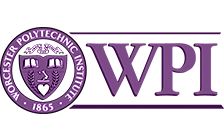
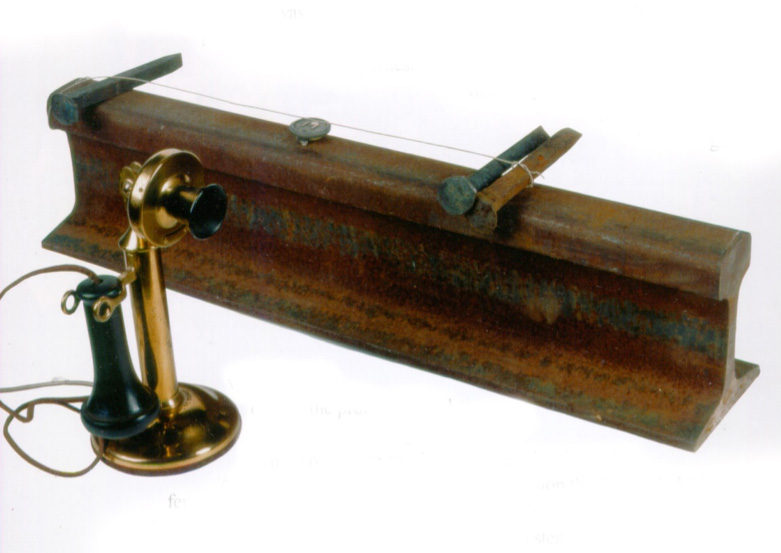
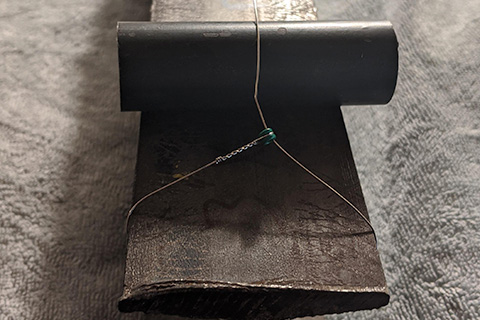 Side View
Side View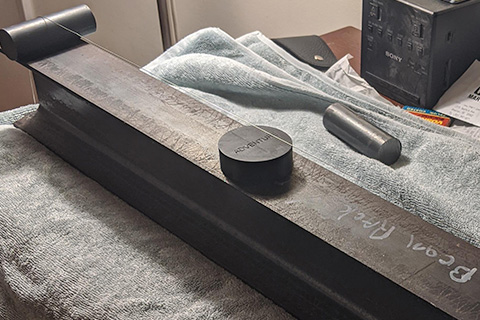 Top View
Top View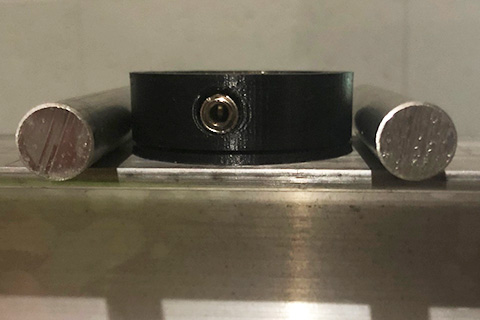 Rail Components
Rail Components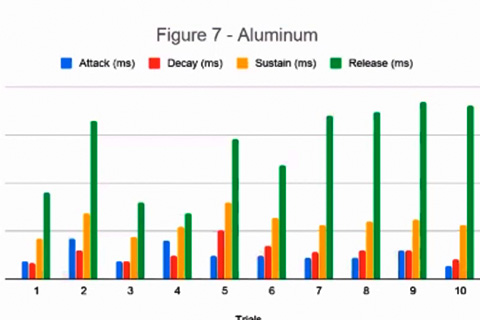 Project Presentation
Project Presentation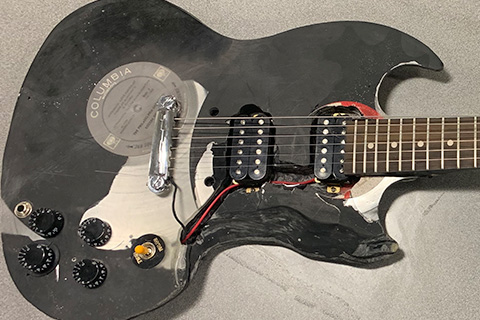 Front View
Front View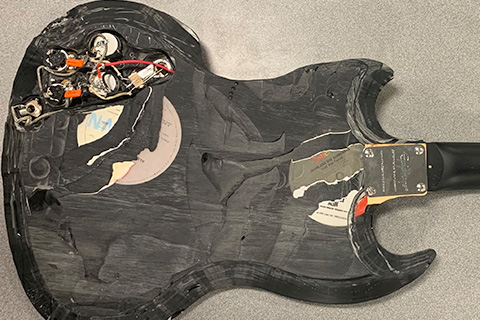 Back View
Back View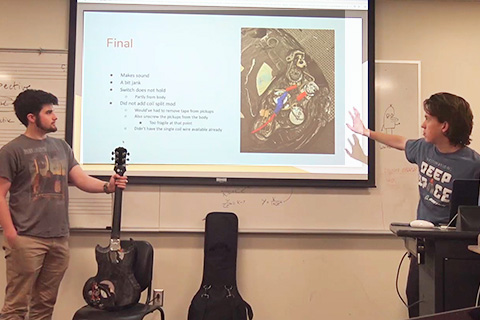 Project Presentation
Project Presentation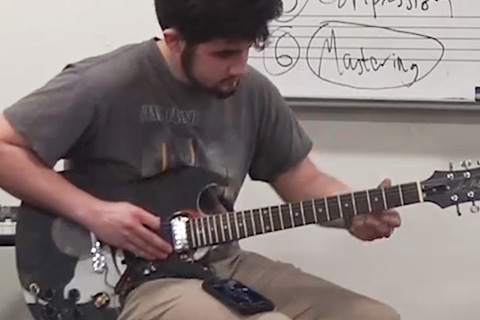 Project Demonstration
Project Demonstration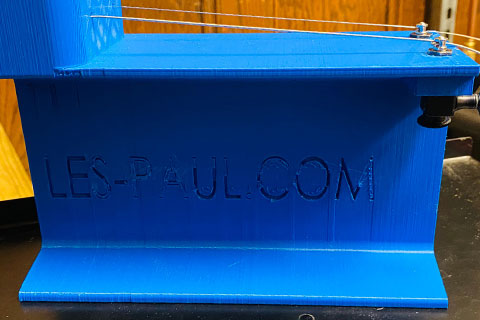 Side View
Side View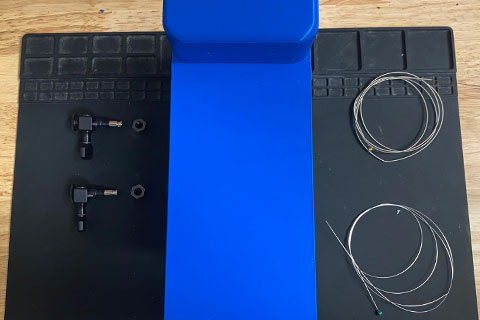 Kit Parts
Kit Parts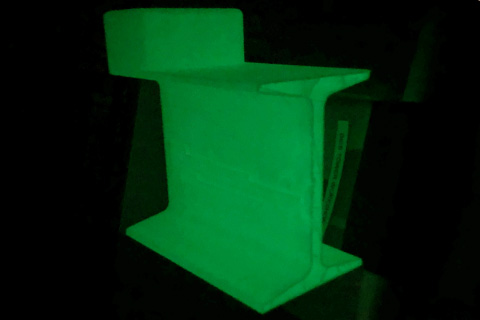 Materials
Materials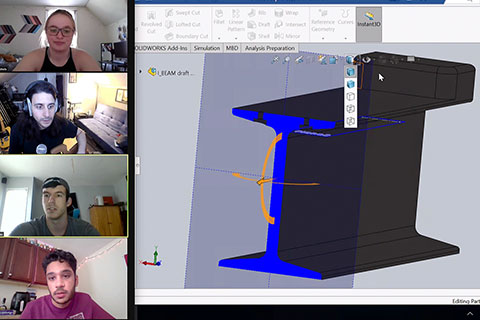 Team Meeting
Team Meeting
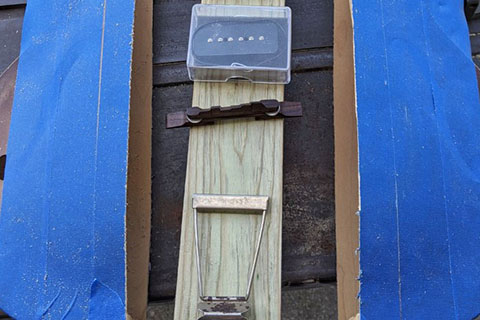 Parts Layout
Parts Layout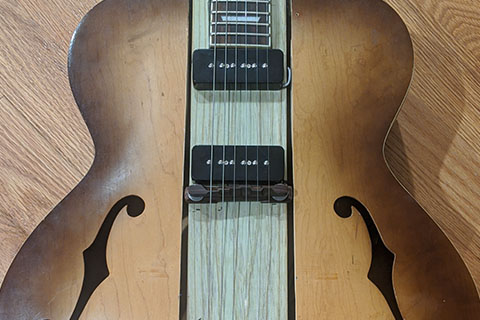 Final Assembly
Final Assembly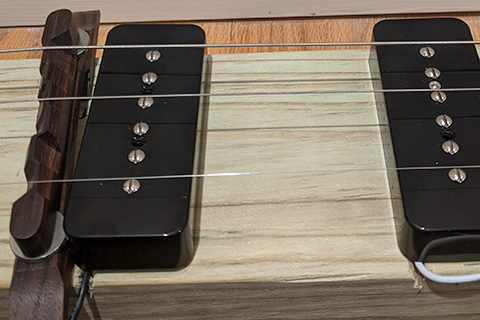 Pickup wiring
Pickup wiring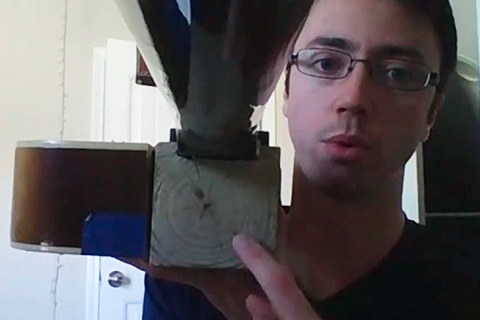 Presentation Video
Presentation Video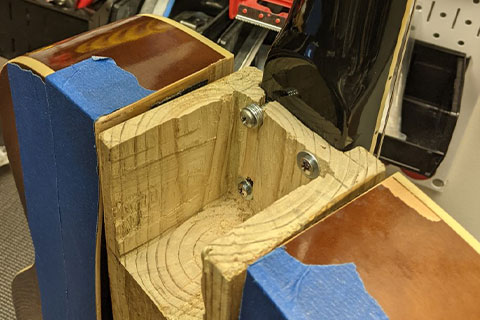 Neck Joint Revised 1
Neck Joint Revised 1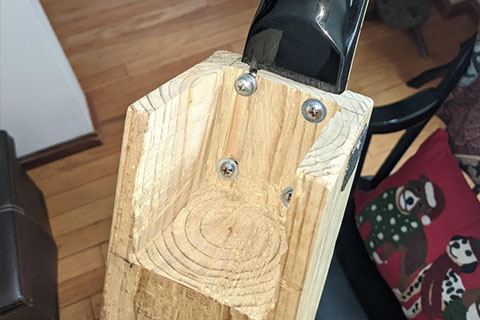 Neck Joint Revised 2
Neck Joint Revised 2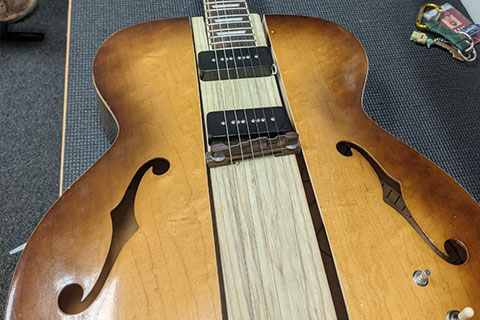 Log Action Setup
Log Action Setup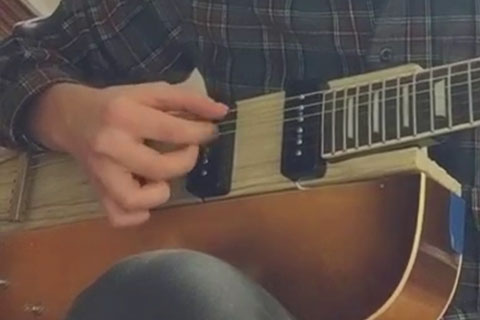 Student Demonstration
Student Demonstration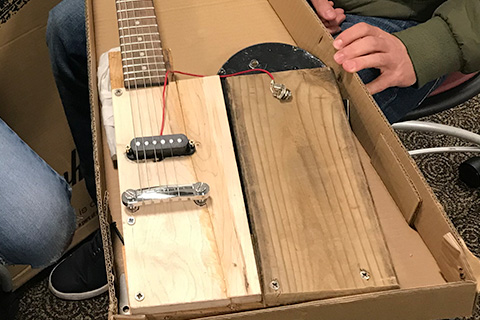 Prototyping Stage
Prototyping Stage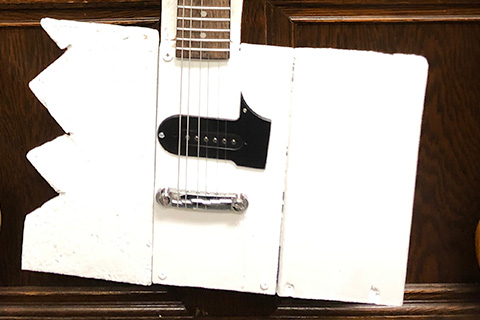 Front View of Iteration
Front View of Iteration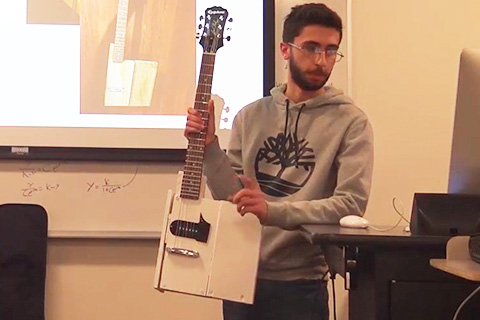 Project Presentation
Project Presentation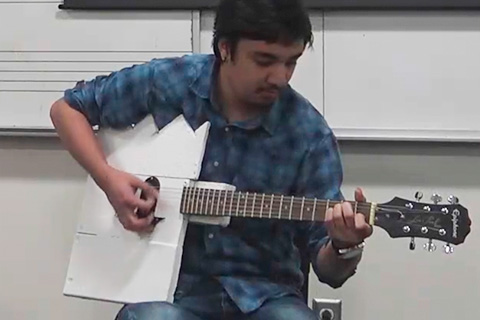 Project Demonstration
Project Demonstration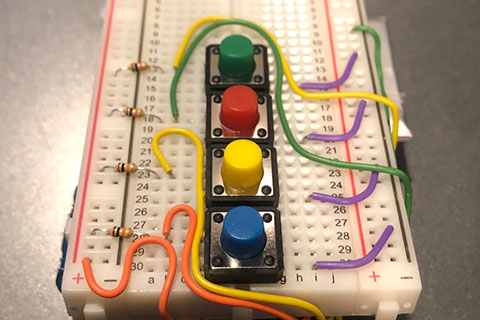 Circuitboard
Circuitboard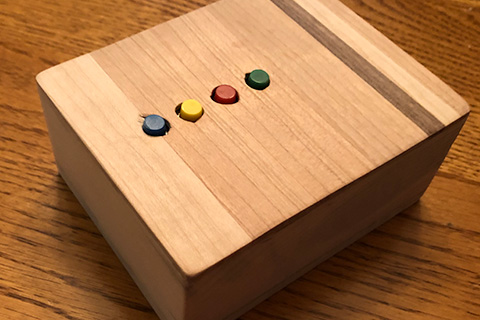 Board in Enclosure
Board in Enclosure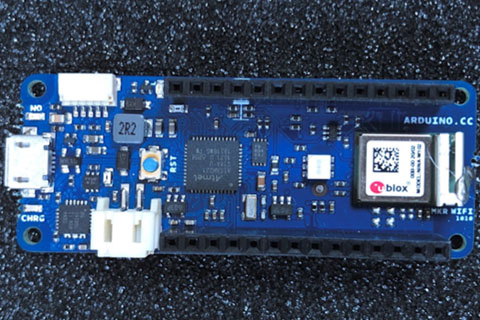 Project Presentation
Project Presentation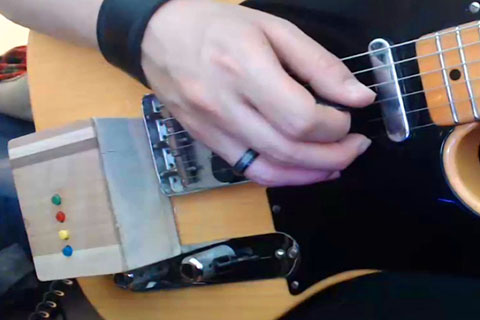 Project Demonstration
Project Demonstration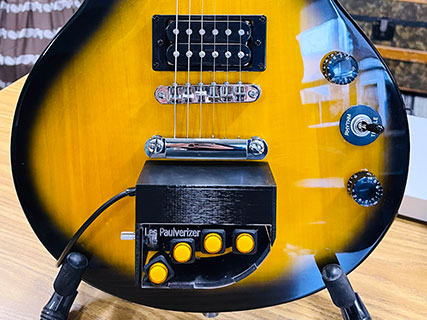 Our Device
Our Device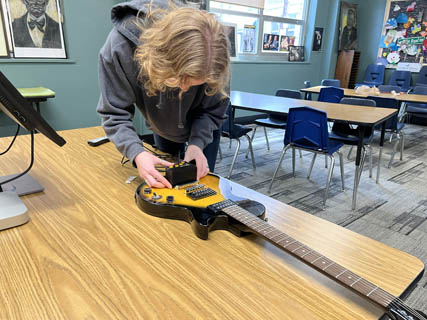 Onsite setup
Onsite setup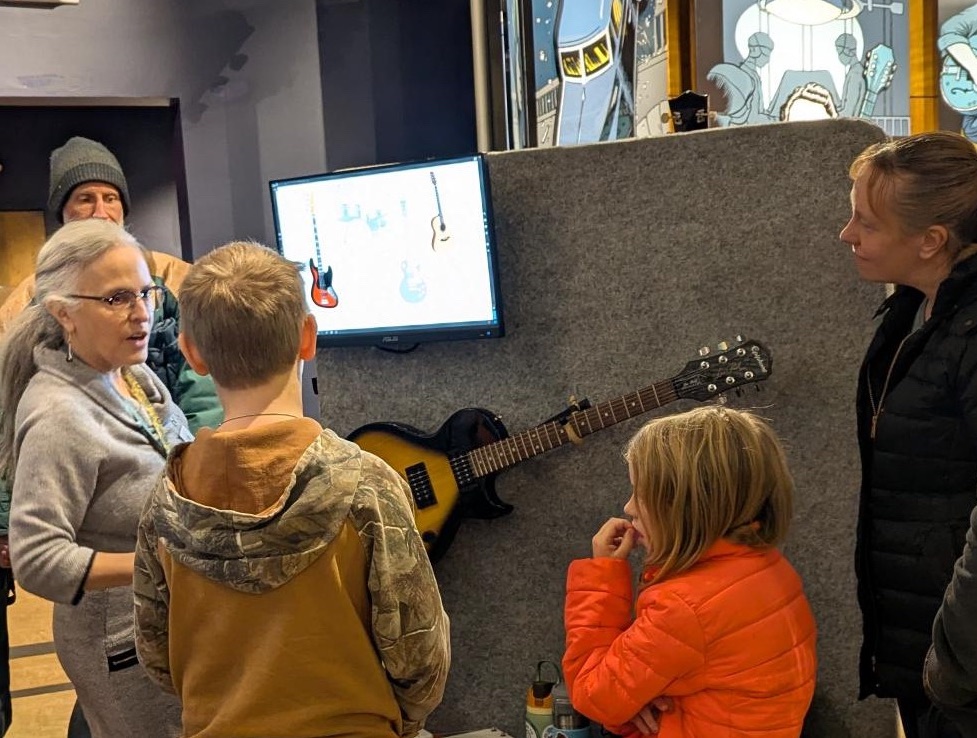 On Display
On Display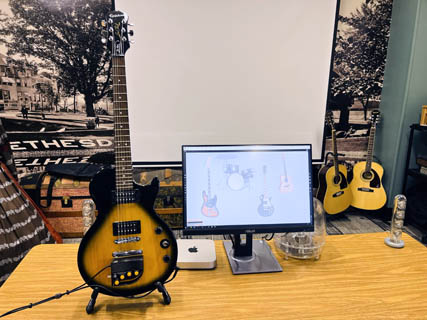 Overview and Demo
Overview and Demo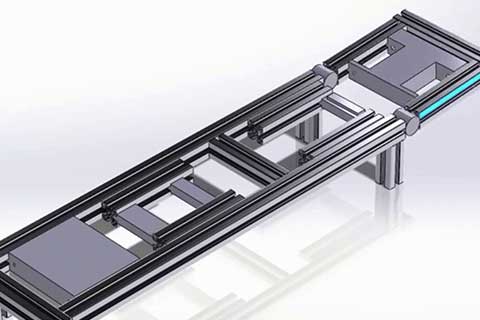 Concept CAD
Concept CAD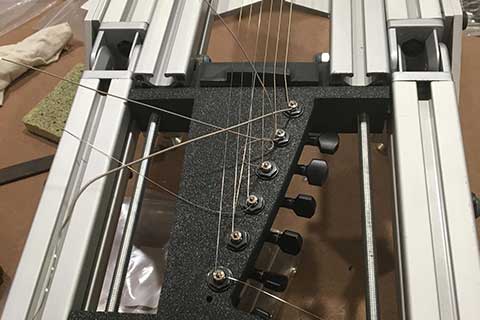 Headstock Module
Headstock Module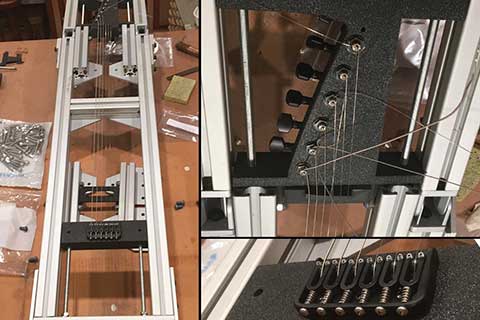 Other Modules
Other Modules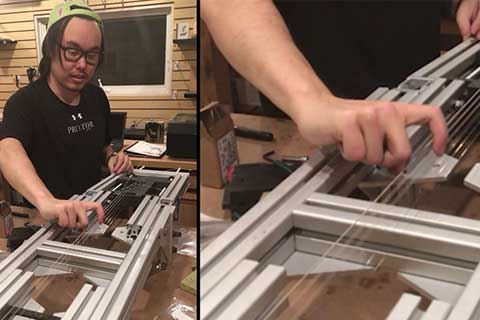 Project Demonstration
Project Demonstration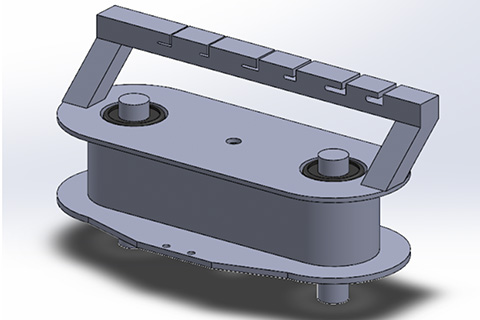 Concept CAD
Concept CAD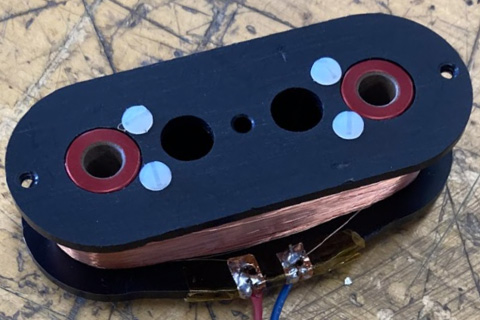 Pickup Bobbin
Pickup Bobbin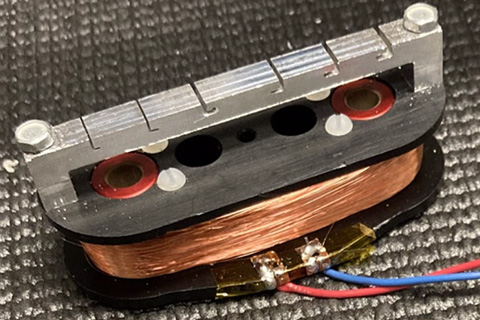 Bobbin with String "Yoke"
Bobbin with String "Yoke"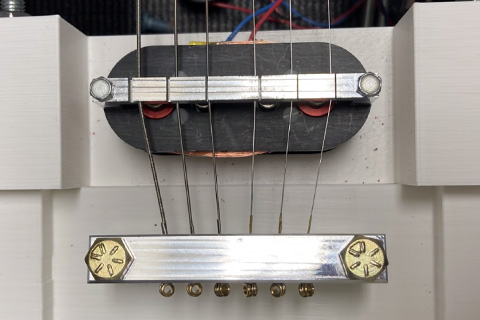 Pickup in Testing Rig
Pickup in Testing Rig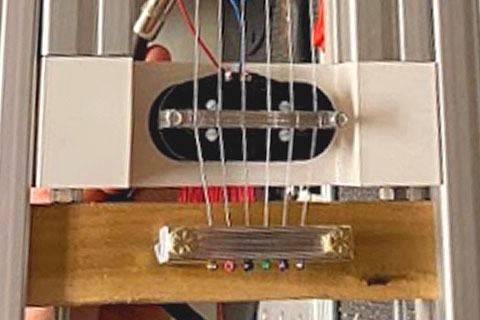 Linear Bearing Prototype
Linear Bearing Prototype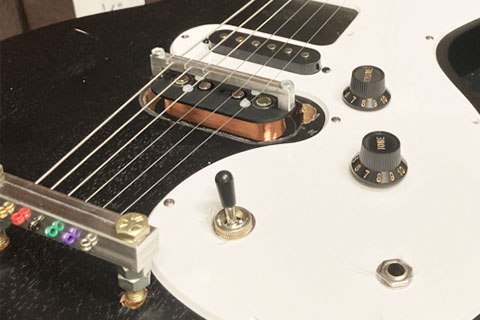 Prototype in a guitar
Prototype in a guitar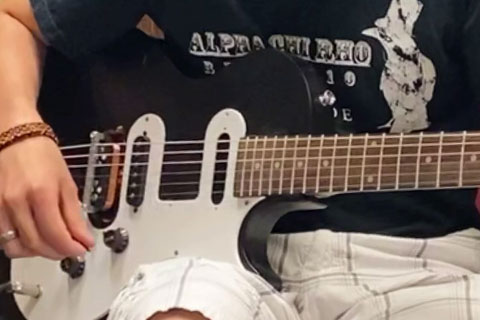 Prototype Demonstration
Prototype Demonstration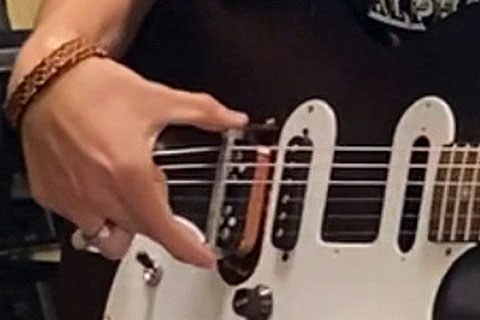 "Floating" Pickup-Bridge Demo
"Floating" Pickup-Bridge Demo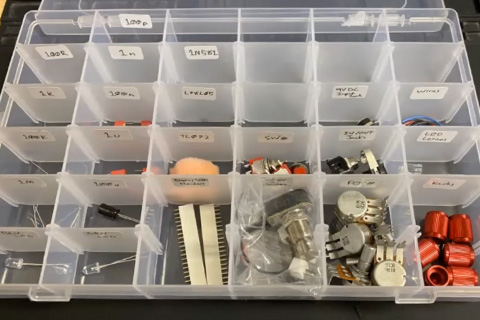 Pedal Kit
Pedal Kit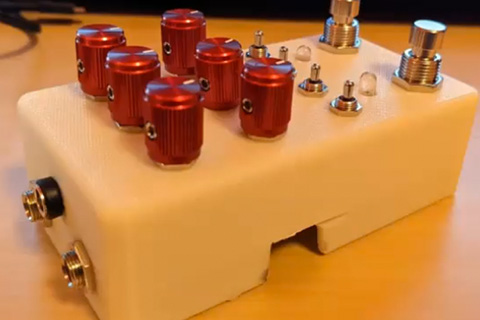 the "Lover" pedal
the "Lover" pedal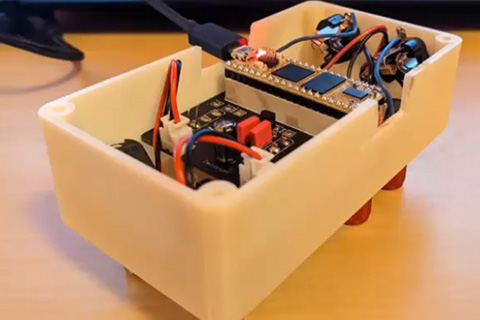 the "Lover" pedal (bottom)
the "Lover" pedal (bottom)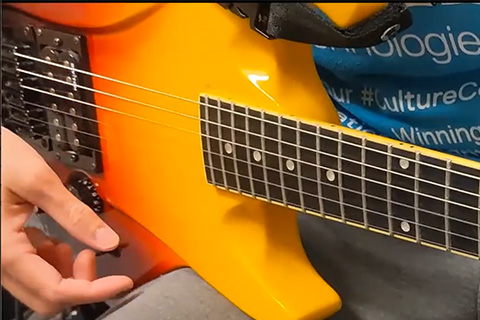 Les Paul Multi-FX Pedal
Les Paul Multi-FX Pedal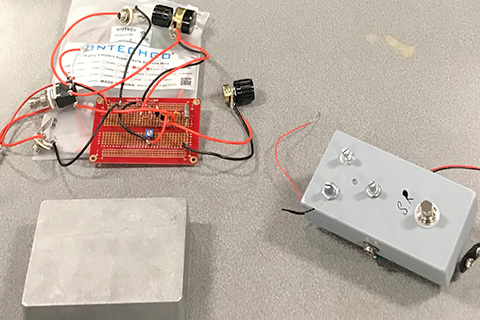 Prototyping Stage
Prototyping Stage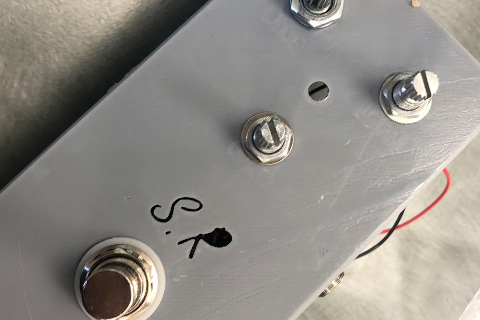 Front View
Front View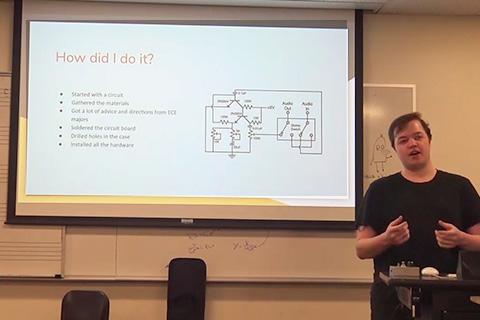 Project Presentation
Project Presentation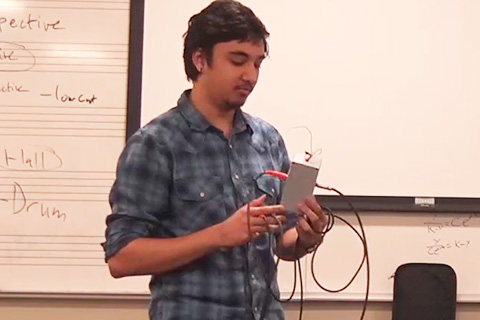 Project Demonstration
Project Demonstration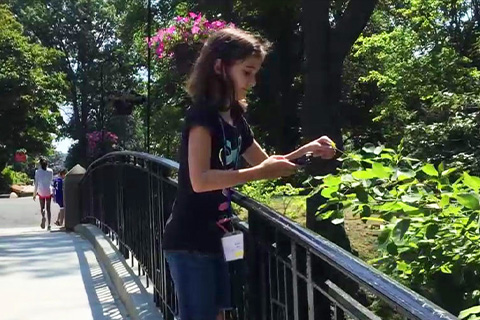 Field Recording
Field Recording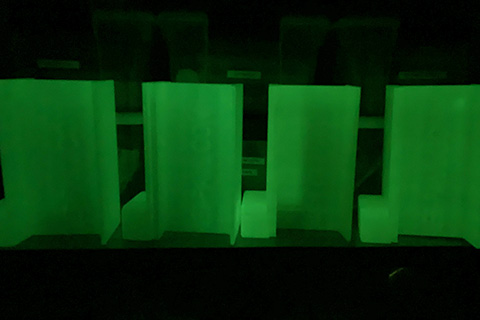 Rail Kits
Rail Kits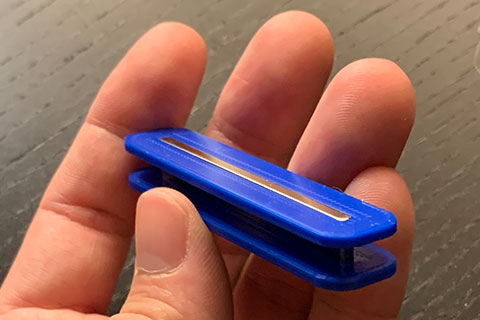 Pickup-winding
Pickup-winding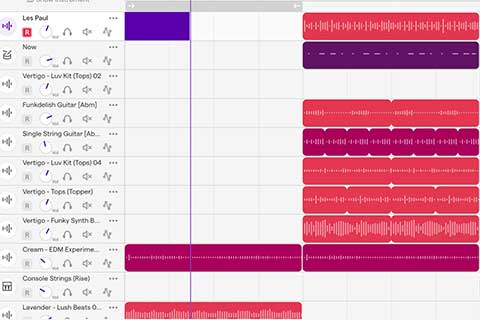 Multitrack Recording
Multitrack Recording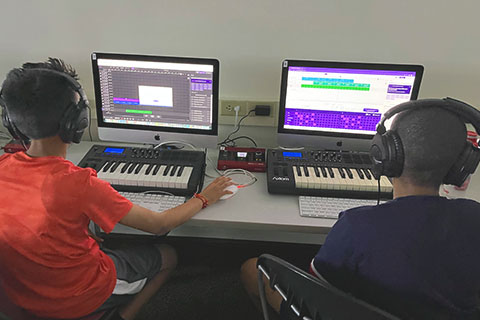 Creating music with technology
Creating music with technology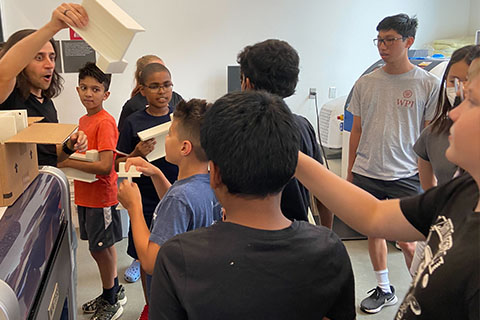 Materials and 3D Printing
Materials and 3D Printing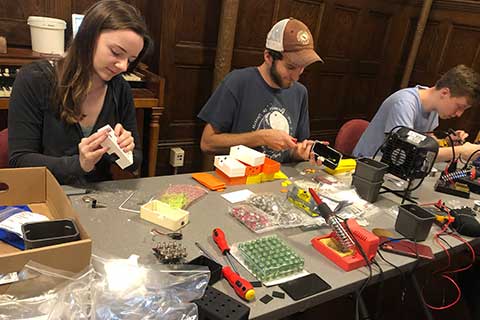 Assembling the pedals
Assembling the pedals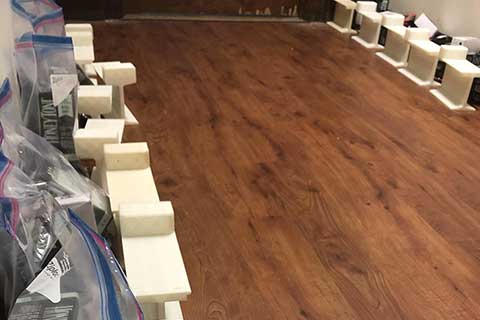 Gathering Resources
Gathering Resources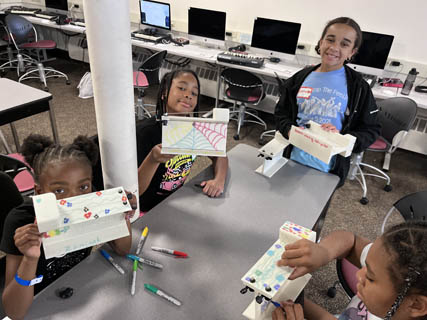 Personalizing the Rails
Personalizing the Rails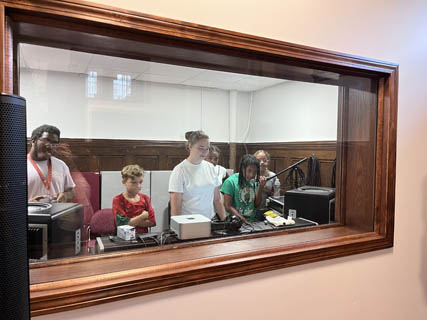 Recording in the Control Room
Recording in the Control Room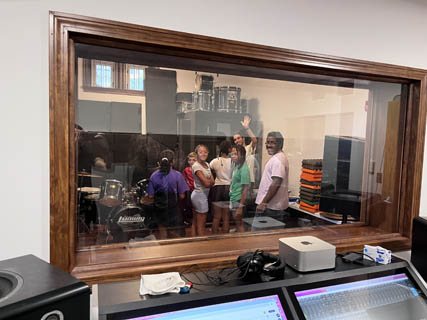 Recording in the Live Room
Recording in the Live Room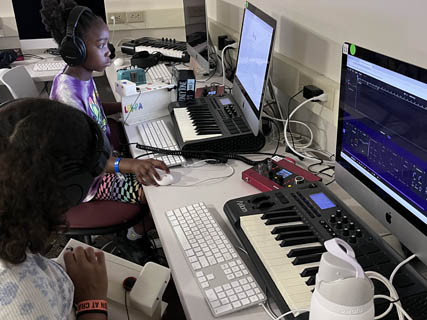 Sound on Sound
Sound on Sound